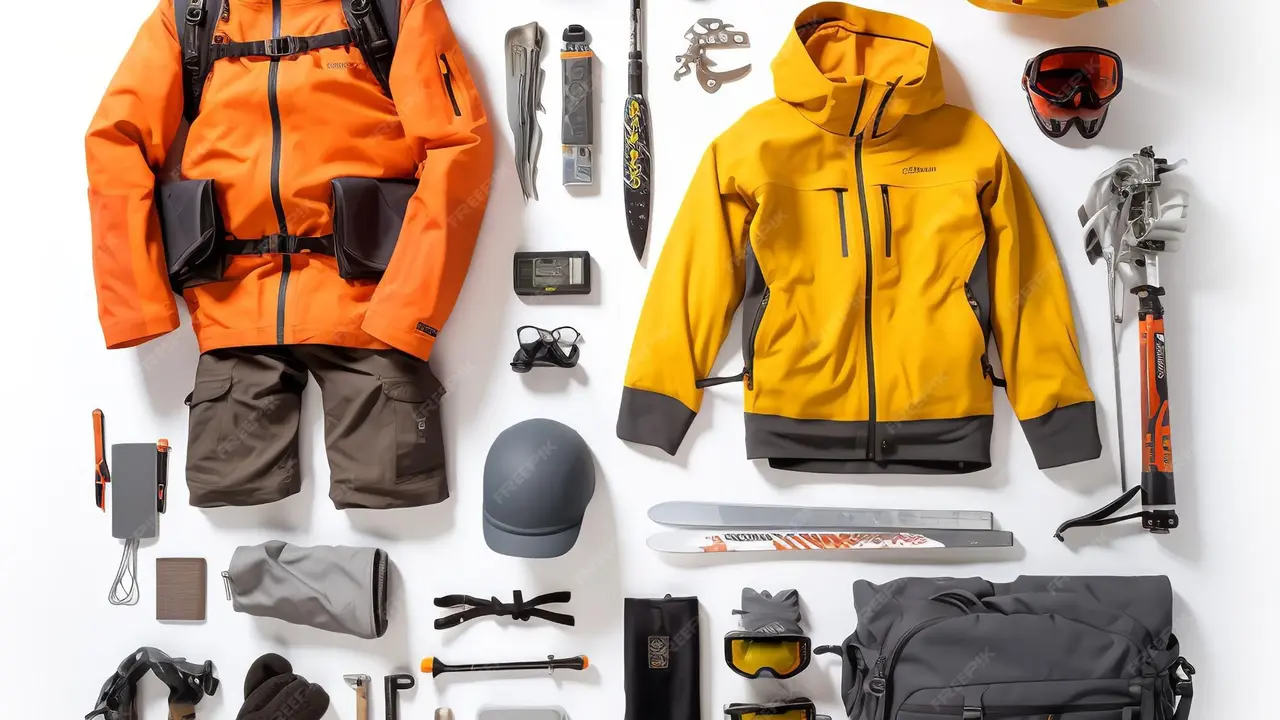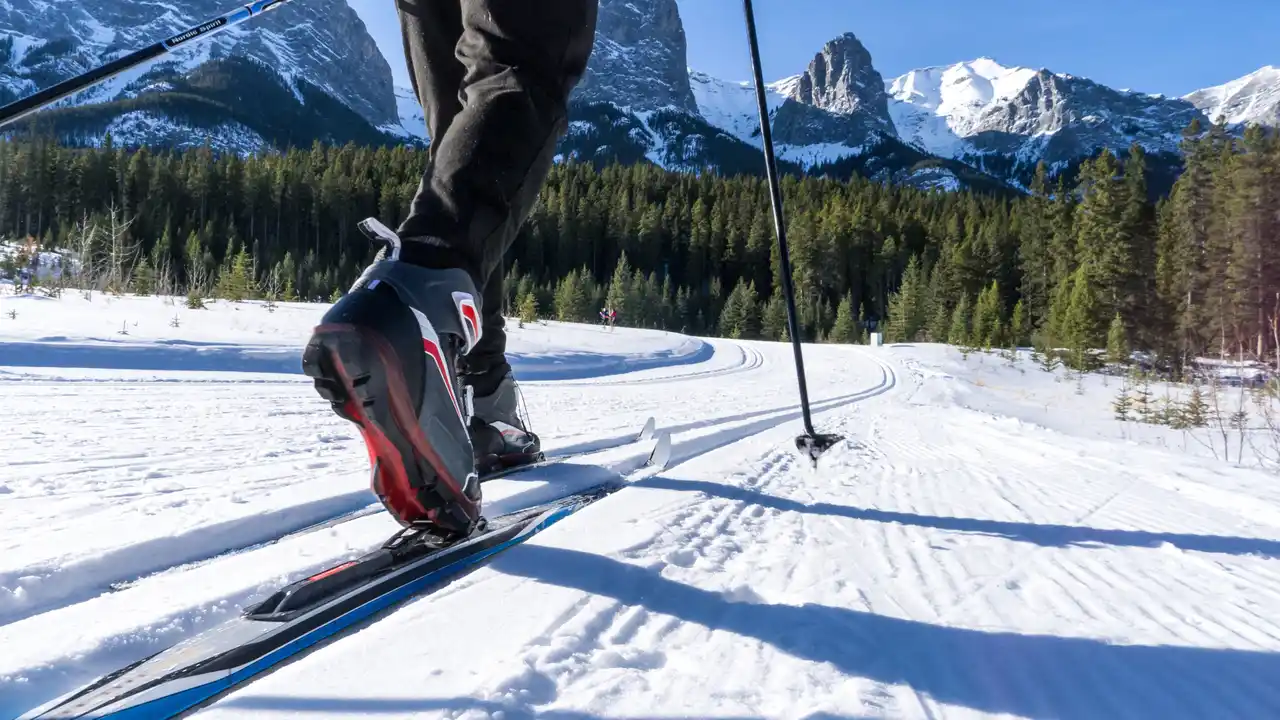Avalanche Safety Gear Explained Your Backcountry Lifeline
Understand essential avalanche safety gear for backcountry adventures. Learn about beacons, shovels, and probes.
Why Avalanche Safety Gear is Non-Negotiable for Backcountry Skiing and Snowboarding
Venturing into the backcountry offers unparalleled freedom, untouched powder, and breathtaking views. However, with this freedom comes inherent risks, the most significant of which is avalanches. An avalanche can strike without warning, burying individuals under tons of snow. While education and careful terrain assessment are paramount, having the right avalanche safety gear and knowing how to use it is your absolute lifeline in an emergency. This isn't just about having the equipment; it's about understanding its purpose, practicing with it regularly, and making it an integral part of your backcountry routine. Think of it as your personal insurance policy against the unpredictable forces of nature. Without it, you're not just putting yourself at risk, but also anyone else in your group who might need to rescue you.
The Essential Trio Avalanche Beacons Shovels and Probes
When we talk about avalanche safety gear, three items form the absolute core: an avalanche transceiver (beacon), a shovel, and a probe. These three tools work in conjunction to facilitate a rapid and effective rescue if someone in your group gets buried. Each plays a critical role, and none should be left behind. They are the foundation of any backcountry safety kit, and their combined use is what makes a successful rescue possible.
Avalanche Beacons Transceivers The Signal to Survival
An avalanche beacon, or transceiver, is a device that transmits a radio signal and can also receive signals from other beacons. In the event of a burial, the buried person's beacon transmits a signal, and rescuers use their beacons in receive mode to pinpoint the location of the signal. This is the first and most crucial step in any avalanche rescue. Modern beacons are digital, offering visual and auditory cues to guide rescuers directly to the buried victim. They are designed for ease of use, but proficiency comes only with practice.
Key Features to Look for in Avalanche Beacons
When choosing an avalanche beacon, consider these features:
- Multiple Antennas: Most modern beacons have three antennas, which significantly improve search accuracy and speed, especially for fine searches.
- Marking Function: Essential for multiple burial scenarios, allowing rescuers to 'mark' a found signal and move on to search for others.
- Range: A wider search strip width (range) can reduce the time spent searching, especially in large debris fields.
- Battery Life Indicator: Crucial for ensuring your beacon is always ready.
- User Interface: Look for an intuitive interface that is easy to operate, even under stress and with gloves on.
- Group Check Function: Allows for quick verification that all group members' beacons are transmitting correctly before heading out.
Recommended Avalanche Beacon Models and Pricing
Here are a few top-rated avalanche beacons, their typical use cases, and approximate pricing:
-
Black Diamond Recon BT:
- Use Case: Excellent for recreational backcountry users, offering a good balance of features and ease of use. Bluetooth connectivity allows for updates and settings management via a smartphone app.
- Features: Three antennas, marking function, circular range for easy searching, Bluetooth connectivity.
- Price: Approximately $350 - $400 USD.
-
Mammut Barryvox S:
- Use Case: A professional-grade beacon suitable for serious backcountry enthusiasts and guides. Known for its extensive search range and advanced features.
- Features: Large search strip width (70m), Smart Search function, multiple burial marking, W-Link for communication with other Barryvox devices.
- Price: Approximately $450 - $500 USD.
-
Ortovox Diract Voice:
- Use Case: Ideal for those who prioritize ease of use and quick learning. Its voice navigation feature provides clear, spoken instructions during a search.
- Features: Voice navigation, three antennas, marking function, smart antenna technology for improved transmission.
- Price: Approximately $380 - $430 USD.
Avalanche Shovels The Digging Power for Rescue
Once a buried victim's location is pinpointed with a beacon and probe, the shovel becomes the most critical tool. Digging someone out of avalanche debris is incredibly hard work, and a sturdy, efficient shovel is paramount. Snow in an avalanche sets up like concrete, making a flimsy shovel useless. A good avalanche shovel is designed for rapid snow removal and durability.
What Makes a Good Avalanche Shovel
Consider these aspects when selecting a shovel:
- Material: Aluminum is the standard for blades, offering a good balance of strength and weight. Some high-end shovels use carbon fiber for handles to reduce weight.
- Blade Size: A larger blade moves more snow per scoop, speeding up the rescue.
- Handle Type: T-handles and D-handles are common. D-handles often provide a more comfortable and secure grip, especially with gloves.
- Extendable Handle: An extendable handle provides better leverage and reduces fatigue during prolonged digging.
- Durability: The shovel should feel robust and capable of handling hard, compacted snow without bending or breaking.
- Hoe Mode: Some shovels can be configured into a hoe, which is incredibly efficient for moving large volumes of snow, especially when digging a snow pit or clearing a path.
Recommended Avalanche Shovel Models and Pricing
Here are some reliable avalanche shovels:
-
Black Diamond Deploy 3:
- Use Case: A compact and quick-deploying shovel, perfect for those who prioritize speed and ease of assembly.
- Features: Unique pull-out handle design for rapid deployment, durable aluminum blade, compact size.
- Price: Approximately $70 - $80 USD.
-
Ortovox Badger:
- Use Case: A lightweight yet robust shovel, great for everyday backcountry tours where weight is a consideration but durability is still key.
- Features: Ergonomic hybrid grip, durable aluminum blade, oval handle for increased rigidity.
- Price: Approximately $60 - $70 USD.
-
Mammut Alugator Ride 3.0:
- Use Case: A versatile and powerful shovel, ideal for those who want maximum digging efficiency and the option for hoe mode.
- Features: Hardened, anodized aluminum blade, oval telescopic shaft, automatic locking for quick, precise guidance during assembly, hoe function.
- Price: Approximately $80 - $90 USD.
Avalanche Probes The Pinpoint Locator
After using the beacon to get a general location, the avalanche probe is used to pinpoint the exact location and depth of the buried victim. A probe is a collapsible pole, typically made of aluminum or carbon fiber, with marked segments. Rescuers systematically probe the snow until they strike the buried person. This step is crucial for minimizing the time spent digging and ensuring the rescue is as efficient as possible.
Choosing the Right Avalanche Probe
Key considerations for probes include:
- Length: Probes typically range from 240 cm to 320 cm. Longer probes are generally better for deeper burials, but 240 cm is often considered the minimum.
- Material: Aluminum is durable and affordable. Carbon fiber is lighter but more expensive and potentially more brittle.
- Deployment System: Look for a quick and reliable deployment system, usually a pull-cord or wire that locks the segments together.
- Markings: Clear depth markings on the probe are essential for determining burial depth.
- Stiffness: A stiffer probe provides better feedback when striking a buried object and is less likely to deflect in hard snow.
Recommended Avalanche Probe Models and Pricing
Here are some popular avalanche probes:
-
Black Diamond Quickdraw Carbon Probe 240:
- Use Case: A lightweight and compact option, great for those who prioritize minimal weight without sacrificing essential functionality.
- Features: Carbon fiber construction, Quickdraw speed ferrule system for rapid deployment, durable cord.
- Price: Approximately $90 - $100 USD.
-
Ortovox 240 Light PFA:
- Use Case: A very light and reliable aluminum probe, suitable for general backcountry use.
- Features: Aluminum construction, PFA quick-assembly system, large probe tip for improved penetration.
- Price: Approximately $80 - $90 USD.
-
Mammut Probe 280 Speed Lock:
- Use Case: A longer probe for potentially deeper burials, offering excellent rigidity and a fast locking mechanism.
- Features: Durable aluminum, Speed Lock system for quick and secure assembly, clear depth markings.
- Price: Approximately $100 - 110 USD.
Beyond the Trio Avalanche Airbags and Communication Devices
While the beacon, shovel, and probe are the absolute minimum, advanced safety gear can significantly increase your chances of survival and improve rescue efficiency. These items are often considered for more experienced backcountry users or those venturing into higher-risk terrain.
Avalanche Airbags The Buoyancy Advantage
An avalanche airbag system is designed to keep a person on top of the snow during an avalanche. When deployed, a large airbag inflates around the wearer's head and shoulders, increasing their volume and making them more buoyant in the moving snow. This significantly reduces the chance of being buried. Airbags are not a substitute for the essential trio, but rather an additional layer of protection.
Types of Avalanche Airbag Systems
- Compressed Air/Gas Canister: These systems use a single-use compressed air or gas canister to inflate the airbag. Once deployed, the canister needs to be replaced or refilled.
- Fan-Based (Electric): These systems use a battery-powered fan to inflate the airbag. They can often be deployed multiple times on a single charge and are rechargeable.
Recommended Avalanche Airbag Models and Pricing
Airbag systems are a significant investment, but for many, the added safety is worth it.
-
BCA Float 22 Avalanche Airbag 2.0:
- Use Case: A popular choice for recreational users, offering a good balance of capacity and the reliable Float 2.0 compressed air system.
- Features: Compressed air canister system, dedicated safety tool pocket, multiple carrying options.
- Price: Approximately $600 - $700 USD (backpack only, canister sold separately for around $200).
-
Mammut Light Protection Airbag 3.0:
- Use Case: Designed for those who prioritize lightweight gear for longer tours, featuring Mammut's reliable Protection Airbag System.
- Features: Compressed air system, very lightweight, full protection around head, neck, and chest.
- Price: Approximately $750 - $850 USD (backpack only, canister sold separately for around $200).
-
Arc'teryx Voltair 30:
- Use Case: A high-end option with an electric fan-based system, offering multiple deployments and ease of recharging.
- Features: Battery-powered fan, multiple deployment capability, robust construction, easy to pack.
- Price: Approximately $1,500 - $1,700 USD.
Two-Way Radios and Satellite Communicators Staying Connected in the Wild
Communication is key in the backcountry, especially in an emergency. Cell service is often unreliable or non-existent. Two-way radios allow for direct communication within your group, while satellite communicators provide a way to send SOS messages and communicate with emergency services or contacts outside your group.
Recommended Communication Devices and Pricing
-
BCA BC Link 2.0 Radio:
- Use Case: Specifically designed for backcountry use, allowing easy communication between group members without removing gloves or packs.
- Features: Smart Mic user interface, long-lasting battery, glove-friendly controls, integrated into many BCA packs.
- Price: Approximately $180 - $200 USD per unit.
-
Garmin inReach Mini 2:
- Use Case: A compact satellite communicator for sending SOS messages, two-way texting, and tracking your location globally. Requires a subscription.
- Features: Global satellite coverage, interactive SOS, track sharing, weather forecasts, paired with smartphone app.
- Price: Approximately $300 - $350 USD (plus monthly subscription fee, starting around $15 USD).
Practice Makes Perfect Regular Training for Avalanche Preparedness
Owning the gear is only half the battle. Knowing how to use it effectively and efficiently under pressure is what truly matters. Regular practice with your beacon, shovel, and probe is absolutely essential. This includes:
- Beacon Practice: Regularly practice searching for buried beacons, both single and multiple burials. Set up mock scenarios with friends.
- Probing Practice: Practice systematic probing techniques to quickly locate a buried object.
- Shoveling Practice: Understand efficient shoveling techniques (e.g., the V-shaped conveyor method) to move snow quickly and effectively.
- Group Drills: Conduct full-scale mock rescues with your touring partners. Time yourselves and identify areas for improvement.
- Avalanche Courses: Enroll in an accredited avalanche safety course (e.g., AIARE 1, AST 1). These courses provide invaluable theoretical knowledge and practical skills.
Remember, in an avalanche rescue, every second counts. The faster you can locate and extricate a buried victim, the higher their chances of survival. Your gear is only as good as your proficiency in using it.
Packing Your Avalanche Safety Gear The Right Way
How you pack your gear is almost as important as what gear you carry. Your beacon should always be worn on your body, under your outer layers, to prevent it from being ripped off in an avalanche. Your shovel and probe should be easily accessible in a dedicated pocket of your backpack, not buried under other items. Many backcountry-specific backpacks have external or easily accessible internal pockets for these tools. This ensures you can deploy them quickly when time is of the essence.
Final Thoughts on Backcountry Safety and Gear Investment
Investing in quality avalanche safety gear is an investment in your life and the lives of your touring partners. Do not compromise on these essential tools. While the initial cost might seem high, it pales in comparison to the potential consequences of being unprepared. Always remember that gear is just one component of avalanche safety. Education, experience, conservative decision-making, and effective communication within your group are equally, if not more, important. Stay safe out there, and enjoy the incredible beauty of the winter backcountry responsibly.

:max_bytes(150000):strip_icc()/277019-baked-pork-chops-with-cream-of-mushroom-soup-DDMFS-beauty-4x3-BG-7505-5762b731cf30447d9cbbbbbf387beafa.jpg)






